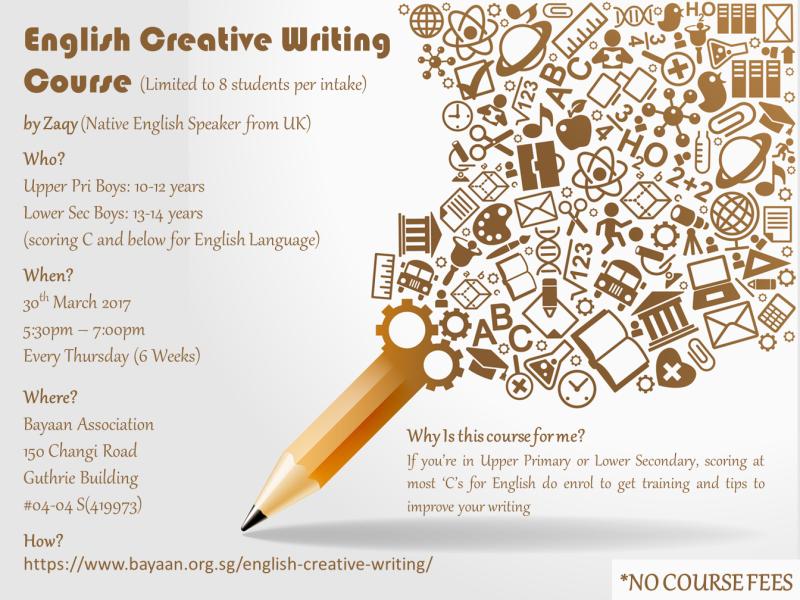What is creatcreative writing?
Creative writing is a form of expression that involves the imaginative crafting of words to convey ideas, stories, or emotions. It is a mode of writing that goes beyond mere conveyance of information and often focuses on originality, artistic expression, and the use of language in unique and innovative ways. In creative writing, writers have the freedom to explore various genres, styles, and forms, allowing for a wide range of creative expression.
Key aspects of creative writing include:
Imagination and Creativity: Creative writing encourages writers to tap into their imagination and inventiveness. It involves the creation of fictional worlds, characters, and narratives.
Expressive Freedom: Writers in the creative realm have the freedom to express themselves in a personal and unique voice. This freedom extends to experimenting with language, form, and structure.
Genres and Styles: Creative writing encompasses various genres and styles, including fiction, poetry, drama, creative nonfiction, and more. Each genre offers distinct opportunities for creative exploration.
Narrative Exploration: Storytelling is a fundamental element of creative writing. Writers can explore characters, plots, and themes to engage readers and evoke emotions.
Language Play: Creative writing often involves a playful and inventive use of language. Writers may experiment with metaphors, similes, wordplay, and other literary devices to enhance their writing.
Emotional Resonance: Many works of creative writing aim to evoke emotions and create a resonant connection with the reader. Writers use language to convey mood, atmosphere, and the emotional experiences of characters.
Character Development: In fiction and creative nonfiction, writers often develop characters with distinct personalities, backgrounds, and motivations. This adds depth and complexity to the narrative.
Setting and Description: Creative writing pays attention to the vivid and evocative description of settings, creating immersive environments for readers.
Dialogue: In plays, screenplays, and certain forms of fiction, dialogue plays a crucial role. Effective dialogue enhances character development and moves the narrative forward.
Revision and Editing: Like any form of writing, creative writing involves a process of revision and editing. Writers refine and polish their work to enhance clarity, coherence, and overall effectiveness.
Creative writing can take many forms, ranging from short stories and novels to poems, scripts, essays, and more. It is not confined to any specific subject matter and can explore themes as diverse as love, identity, social issues, fantasy, and the human experience.
Whether pursued as a personal hobby or with aspirations of becoming a published author, creative writing is a dynamic and subjective form of artistic expression. It allows writers to explore the boundaries of language and storytelling, fostering a deep connection between the writer's imagination and the reader's interpretation.
What defines the realm of creative writing?
Creative writing, unlike its factual or technical counterparts, exists in a vibrant realm where imagination dances with language, weaving worlds, breathing life into characters, and evoking emotions through captivating narratives. But what truly defines this unique space? Here are some key elements that set it apart:
1. Imagination as the Playground:
- This is where boundaries dissolve, and possibilities abound. Writers become architects of their own worlds, conjuring up characters, settings, and scenarios limited only by their minds.
- The essence of fantasy, wonder, and the "what if" thrives in this realm, allowing exploration of diverse experiences and perspectives, both real and imagined.
2. Language as the Paintbrush:
- Words, in their myriad forms and combinations, become the tools with which writers color their narratives, sculpt characters, and build emotional resonance.
- Mastering the nuances of language, from rhythm and sound to figurative devices and stylistic choices, empowers writers to paint vivid pictures, whisper secrets, and ignite imaginations.
3. Storytelling as the Engine:
- Creative writing pulsates with the heartbeat of narratives, woven with threads of plot, character, and setting. Writers become guides, leading readers through journeys of discovery, suspense, and transformation.
- The art of crafting compelling plots, developing relatable characters, and constructing believable settings fuels the engine of storytelling, leaving audiences enthralled.
4. Voice as the Signature:
- Each writer carries within them a unique voice, infused with their personality, experiences, and perspective. This voice becomes the signature, distinguishing their stories from others.
- Honing and cultivating this voice, finding its distinct rhythm and tone, allows writers to express their individuality and connect with readers on a deeper level.
5. The Constant Dance between Creativity and Craft:
- Creative writing is not simply a whimsical flight of fancy; it requires discipline and dedication. Mastering the craft of grammar, structure, and technique equips writers to translate their imagination onto the page in a clear and engaging manner.
- The delicate balance between unbridled creativity and honed craft creates stories that resonate, inspire, and linger long after the last page is turned.
Remember, the realm of creative writing is boundless, ever-evolving, and infinitely personal. There's no single formula or rigid definition, but rather a vast canvas inviting exploration, experimentation, and the joy of giving voice to one's imagination through the magic of words.
So, delve into this wondrous realm, unleash your creativity, and discover the unique story waiting to be told through your voice. The possibilities are endless!













